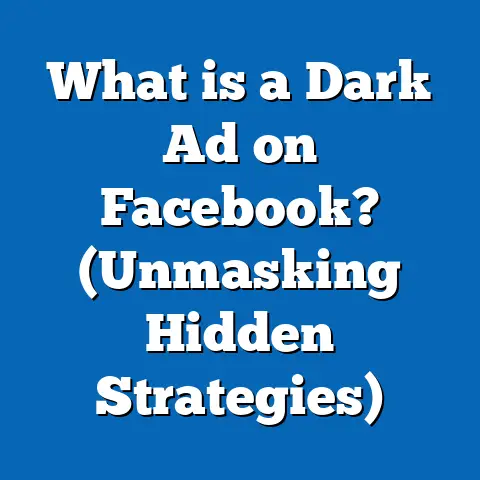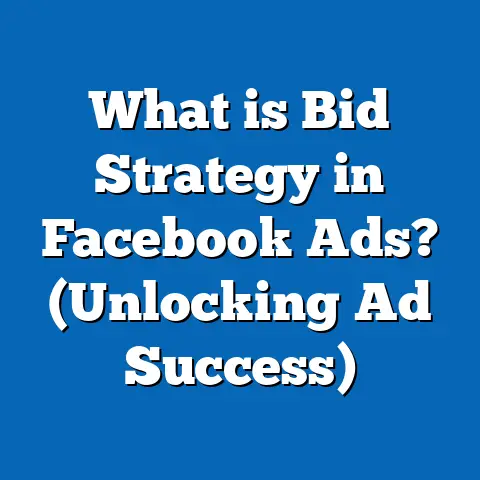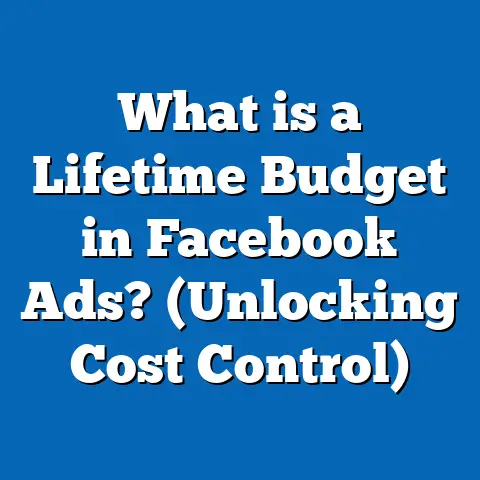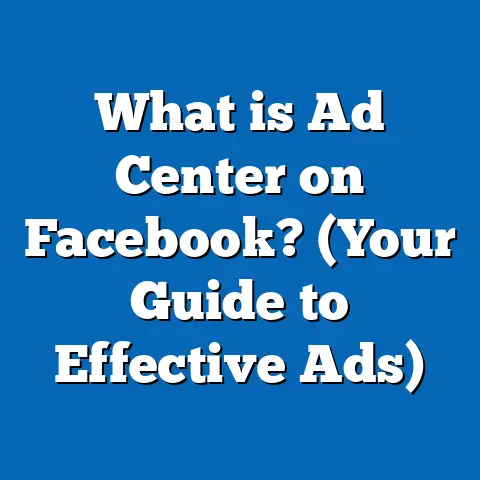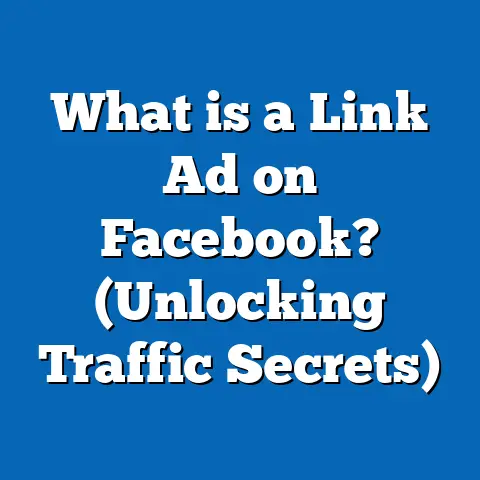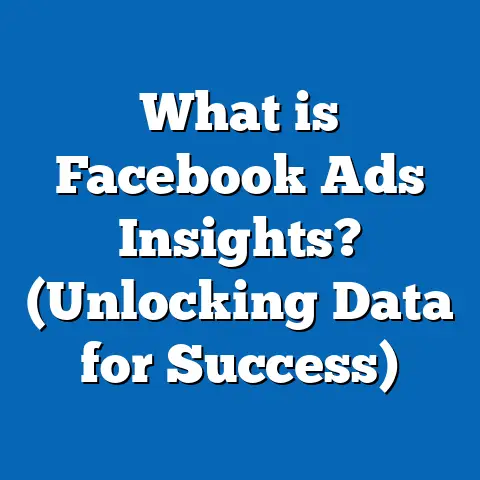What is a Good Hook Rate for Facebook Ads? (Unlocking Engagement)
Innovation drives the evolution of digital marketing, especially on platforms like Facebook where billions of users engage daily. As technology advances, so do user behaviors and expectations. This constant shift demands advertisers continuously refine how they capture attention. In a sea of content, the key to successful advertising lies in mastering the “hook” — that critical initial moment that grabs the audience’s interest and encourages interaction.
Understanding what constitutes a good hook rate for Facebook ads is essential to unlocking engagement. The hook rate is more than just a metric; it’s the gateway to deeper connections with your audience. It determines whether your ad gets noticed or scrolls past unnoticed. In this guide, you’ll learn everything about hook rates — from what they are, why they matter, how to measure and improve them, to real-world case studies and advanced strategies grounded in the latest industry data.
What Is a Hook Rate in Facebook Ads?
Defining the Hook Rate
The hook rate refers to the percentage of viewers who are engaged enough by the first few seconds of your Facebook ad to continue watching, clicking, or interacting. It is a measure of immediate attention capture.
Unlike metrics like Click-Through Rate (CTR) or Conversion Rate (CVR), which reflect actions taken after initial engagement, the hook rate focuses on initial viewer retention—the moment when users decide whether your content is worth their time.
Facebook’s environment is designed to reward content that quickly captures user interest. A high hook rate signals an ad that resonates instantly, increasing the likelihood of further engagement and better campaign performance.
Why Hook Rate Matters More Than Ever
- Shrinking Attention Spans: Research from Microsoft shows human attention spans have dropped from 12 seconds in 2000 to 8 seconds in 2023. This means advertisers must engage users faster than ever.
- Competitive Saturation: Facebook hosts over 10 million active advertisers competing for user attention daily. Your ad has seconds to stand out or be ignored.
- Algorithm Impact: Facebook’s algorithm prioritizes content with high engagement signals early on. Ads with stronger hooks are shown more often and at lower costs.
- Cost Efficiency: Higher hook rates lead to improved relevance scores and lower cost per result—saving budget while driving better outcomes.
Industry Benchmarks: What Is a Good Hook Rate?
Benchmarks Vary by Industry and Format
The definition of a “good” hook rate is not one-size-fits-all. It varies significantly depending on factors such as industry type, ad format (video, carousel, static image), and target audience.
The following table summarizes average hook rates observed across major industries:
| Industry | Average Hook Rate (%) | Typical Ad Format | Notes |
|---|---|---|---|
| E-commerce | 20-30 | Video product demos, lifestyle | Higher hook rates due to direct product appeal |
| Technology | 15-25 | Explainers, tutorials | Often require education alongside engagement |
| Entertainment | 30-40 | Trailers, teasers | Visual and emotional elements boost hooks |
| Finance | 10-20 | Informational, trust-building | Requires credibility-focused hooks |
| Health & Wellness | 18-28 | Testimonials, lifestyle visuals | Emotional connection critical |
| Travel & Leisure | 25-35 | Scenic visuals, storytelling | Aspirational hooks perform well |
Data from Recent Research
- VidMob (2023): Analysis of 2,000 Facebook video ads revealed ads with hook rates above 25% experienced a 35% increase in CTR compared to those below 15%.
- Facebook Internal Report (2024): Ads achieving hook rates over 30% saw up to 50% higher conversion rates.
- HubSpot Survey (2024): Marketers reported that focusing on hook optimization led to an average campaign ROI increase of 22%.
How to Measure Hook Rate on Facebook
Indirect Measurement Using Video Metrics
Facebook Ads Manager does not provide a direct “hook rate” metric but offers several proxies:
- Video View Duration: Percentage of users watching beyond critical early time points (e.g., 3 seconds).
- ThruPlay: The number of times your video plays for at least 15 seconds or to completion.
- Engagement Metrics: Likes, comments, shares within first few seconds or minutes.
- Click-Through Rate (CTR): While different from hook rate, a strong correlation exists between high hook rates and improved CTR.
Calculating Hook Rate
If you want an estimate of hook rate:
- Identify total impressions (number of people who saw the ad).
- Identify number of viewers who watched beyond the first 3 seconds.
- Calculate:
Hook Rate=(Viewers watching past 3 secondsTotal impressions)×100Hook\ Rate = \left( \frac{\text{Viewers watching past 3 seconds}}{\text{Total impressions}} \right) \times 100
Example:
- Impressions: 10,000
- Views past 3 seconds: 2,500
Hook Rate=(250010000)×100=25%Hook\ Rate = \left( \frac{2500}{10000} \right) \times 100 = 25\%
The Science Behind Hooks: Psychological Drivers of Engagement
Understanding what makes a good hook requires looking at human psychology and behavior online.
Attention Capture Principles
- Novelty: Humans are wired to notice new and unusual stimuli.
- Emotion: Content that evokes joy, surprise, curiosity, or even fear grabs attention faster.
- Relevance: Users engage more if they perceive content as directly related to their needs or interests.
- Clarity: Simple messages with clear value propositions reduce cognitive load and hold attention better.
Hook Types That Work
| Hook Type | Description | Example |
|---|---|---|
| Question Hook | Poses an intriguing question | “Struggling to grow your business?” |
| Problem/Solution | Presents pain point followed by solution | “Tired of slow sales? Here’s a fix.” |
| Shock/Surprise | Uses unexpected facts or visuals | “You won’t believe what happened next.” |
| Social Proof | Shows testimonials or numbers early | “Join over 10,000 happy customers.” |
| Humor | Uses funny or clever content | Memes or light-hearted jokes |
Crafting High-Hook-Rate Facebook Ads: Proven Strategies
Strategy #1: Start With a Strong Visual or Message
The very first frame or text should grab attention immediately.
- Use bold colors or contrast
- Feature faces showing emotion
- Display clear headlines or value propositions
- Avoid clutter — make it easy to understand at first glance
Strategy #2: Keep It Short and Focused
Attention spans are short—ads between 6-15 seconds generally perform best for engagement.
- Deliver your core message within the first 3 seconds.
- Avoid jargon or complex introductions.
- Use quick cuts or transitions to maintain energy.
Strategy #3: Leverage Storytelling Techniques
Stories naturally pull people in by creating curiosity and emotional connection.
- Start with a relatable problem.
- Build suspense or intrigue.
- End with a compelling call to action.
Example: An ad opens with a business owner frustrated with slow sales (problem), then shows how the product helped double revenue (solution).
Strategy #4: Use Social Proof Immediately
Trust is crucial especially in industries like finance or health.
- Show testimonials or user reviews upfront.
- Include recognizable logos or endorsements.
- Highlight impressive numbers (“Over 1 million sold”).
Strategy #5: Optimize for Sound-Off Viewing
More than 80% of Facebook video views happen without sound.
- Include captions or text overlays.
- Use visually engaging content that tells the story silently.
- Avoid relying solely on voiceover.
Case Studies: Unlocking Engagement with Effective Hooks
Case Study #1: E-Commerce Fashion Brand Boosts Hook Rate by 90%
A mid-sized fashion retailer tested two versions of a video ad:
- Version A: Started with static product images.
- Version B: Opened with a relatable scenario—a model struggling to find stylish yet comfortable clothes.
Results:
| Metric | Version A | Version B |
|---|---|---|
| Hook Rate | 18% | 34% |
| CTR | 1.8% | 3.5% |
| Sales Increase | Baseline | +40% |
The narrative hook resonated more effectively, leading to higher engagement and conversions.
Case Study #2: SaaS Company Doubles Lead Generation With Relatable Hooks
A software service targeting small businesses ran two campaigns:
- Campaign X: Technical demo starting immediately.
- Campaign Y: Began with a question addressing common pain points (“Is managing client data taking too much time?”).
Results:
| Metric | Campaign X | Campaign Y |
|---|---|---|
| Hook Rate | 14% | 28% |
| Leads Generated | Baseline | +100% |
This highlights the power of empathy-driven hooks.
Advanced Insights: Optimizing Hook Rate Using Facebook’s Latest Features
Dynamic Creative Optimization (DCO)
Facebook’s Dynamic Creative tool allows advertisers to upload multiple creative elements (headlines, images, videos) which the system automatically tests combinations.
Benefits for hook optimization:
- Tests different hooks simultaneously
- Learns which opening frames hold attention best
- Automatically allocates budget toward winning creatives
Using AI-Powered Insights
Facebook’s AI can analyze which parts of videos generate highest engagement moments.
Advertisers can:
- Identify drop-off points precisely
- Refine hooks for maximum retention
- Personalize hooks based on audience segments dynamically
Leveraging Reels and Stories for Higher Hooks
Short-form vertical video formats like Facebook Reels are designed for rapid consumption.
Advantages:
- Average watch time per Reel is significantly higher than traditional feed videos.
- Many brands report hook rates of over 40% on Reels versus 20%-30% on feed videos.
- Reels allow creative freedom with trends, music, and effects that boost initial engagement.
Comparing Hook Rates Across Platforms
Understanding how Facebook compares helps marketers allocate budget effectively.
| Platform | Avg Hook Rate (%) | Strengths | Weaknesses |
|---|---|---|---|
| 20–30 | Large diverse audience; advanced targeting | Highly competitive; saturation | |
| 25–35 | Visual-first; younger demographic | Algorithm favors influencer content | |
| TikTok | 40+ | Viral potential; short-form; trend-driven | Less suited for B2B; less direct sales focus |
| YouTube | 15–25 | Longer form; detailed storytelling | Users expect longer content; harder to hook quickly |
Practical Tips to Improve Your Facebook Ad Hook Rate
Step-by-Step Action Plan
- Audit Existing Ads: Review current video retention reports focusing on first 3 seconds.
- Brainstorm Multiple Hooks: Create at least 3 different opening concepts per ad.
- Use A/B Testing Extensively: Run split tests focusing solely on different hooks.
- Optimize Creatives for Mobile: Ensure text readability and visual clarity on small screens.
- Add Captions & Subtitles: Cater to sound-off viewers effectively.
- Incorporate Trending Elements: Use popular music, challenges, or hashtags where appropriate.
- Analyze Competitor Ads: Note what hooks resonate in your industry niche.
- Leverage Facebook Dynamic Creative & AI Tools: Automate testing and optimization.
- Iterate Based on Data: Refine hooks continually using performance insights.
Common Mistakes That Kill Your Hook Rate
Avoid these pitfalls that reduce viewer engagement:
- Starting with irrelevant or generic content that fails to connect immediately.
- Overloading viewers with too much information at once leading to confusion.
- Using poor-quality visuals or audio that distract from core message.
- Ignoring mobile experience—small text or cluttered frames can cause fast drop-offs.
- Failing to test different openings before scaling campaigns.
- Relying solely on sound without captions in an environment where many watch muted.
- Not utilizing social proof early enough in the ad creative.
Detailed Explanation of Related Metrics: How Hook Rate Fits In
Understanding how hook rate interacts with other key metrics helps optimize overall campaign performance:
Click-Through Rate (CTR)
CTR measures percentage of viewers who click your ad link after engaging initially.
Relationship with Hook Rate:
- Higher hook rates typically lead to increased CTR as users stay engaged long enough to consider clicking.
Conversion Rate (CVR)
Percentage of clicks that turn into desired actions (purchase, signup).
Relationship with Hook Rate:
- Strong hooks attract more qualified leads; thus higher hook rates can indirectly improve CVR by filtering out uninterested viewers.
Cost Per Result (CPR)
How much you pay for each conversion or lead.
Relationship with Hook Rate:
- Ads with better hooks tend to have lower CPR due to improved relevance and engagement metrics favored by Facebook’s auction system.
The Future of Hook Rates in Facebook Advertising
Emerging Trends
- Interactive Ads: Polls, quizzes, and playable ads that engage users actively right from the start.
- Augmented Reality (AR) Effects: Increasing use of AR filters as hooks to create immersive experiences.
- Personalized Hooks via AI: AI-driven personalization delivering dynamic opening frames tailored individually.
- Cross-platform Integration: Hooks optimized for simultaneous distribution across Facebook family apps (Instagram, Messenger).
Preparing Your Strategy
To stay ahead:
- Invest in video content creation focused on quick engagement.
- Experiment with new interactive formats regularly.
- Develop data capabilities for real-time performance analysis.
- Collaborate closely with creative teams trained in psychological triggers.
Summary and Next Steps for Marketers
Key Takeaways
- Hook rate measures how well your ad captures attention within the first few seconds.
- A good hook rate varies but generally falls between 20%-30%; higher in some industries/formats.
- Measuring hook rate requires analyzing video retention metrics such as views past 3 seconds.
- Effective hooks combine strong visuals, emotional storytelling, social proof, and clarity.
- Mobile optimization and sound-off viewing considerations are critical.
- Facebook’s AI tools and dynamic creative features are powerful allies in optimizing hooks.
- Short-form formats like Reels offer significant advantages for quick engagement.
Action Plan To Implement Today
- Start measuring your current hook rates using Facebook video analytics.
- Develop multiple hook concepts per campaign focusing on emotional resonance and clarity.
- Use A/B tests and dynamic creative tools for continuous optimization.
- Incorporate captions and design ads optimized for mobile silent viewing.
- Explore new formats like Reels and interactive ads for higher engagement potential.
- Monitor competitor strategies and industry benchmarks regularly.
Mastering your Facebook ad’s hook rate unlocks higher user engagement, better conversions, and ultimately improved marketing ROI.
If you want me to prepare additional resources such as industry-specific ad templates or script frameworks optimized for high hook rates, just let me know!

